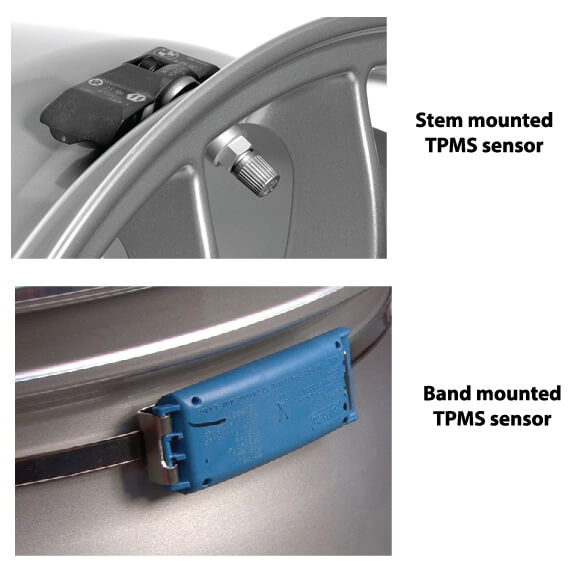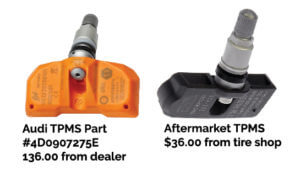TPMS System
What is a TPMS System?
A TPMS System is required on all passenger cars, light trucks and light buses built after September 1, 2007. The tire pressure monitoring system (TPMS) detects tire pressure in one of two ways; direct and indirect.
History of TPMS systems
After a series of fatal sport utility vehicle crashes that resulted in 271 deaths, Congress passed the Transportation Recall Enhancement Accountability Documentation (TREAD) Act of 2000. The deaths were attributed to vehicles being driven with low tire pressure. The legislation required the National Highway Traffic Safety Administration to develop a rule requiring all new vehicles to be equipped a warning system to alert the driver when a tire is significantly under-inflated.
The rule stated that as of Sept. 1, 2007, all new passenger vehicles, trucks and light buses are required to have a sensor-based TPMS system that alerts the driver of a condition where one or more tires is under-inflated by 25% below the car maker’s recommended tire pressure.
Prior to this legislation, some car makers voluntarily installed TPMS systems that were either indirect or direct. So the legislation ended the voluntary compliance are required all car makers to move to direct TPMS
Indirect TPMS
An indirect TPMS system uses the ABS system’s wheel speed sensors to detect an under inflation condition. An under inflated tire has a smaller diameter than a properly inflated tire. Since the ABS braking system compares the rate of rotation of all wheels, it can also detect when a wheel is consistently rotating fewer times per mile than the other tires. In these systems, the ABS system can light the low tire pressure waring light based on revolutions per mile
Direct TPMS
In a direct TPMS system, a tire pressure sensor with the valve

Types of TPMS system sensor mounting: stem mount and band mount
stem is installed on the wheel rim in place of the older style rubber valve stem, or the sensor is installed on a band connected to the center of the rim.
The TPMS sensor reports via radio frequency to a receiver in the vehicle if the tire pressure falls below 25% of the car maker’s recommended tire pressure for that particular vehicle.
What is a TPMS sensor?
Most TPMS sensors are mounted in place of the valve stem and are held in place by a threaded nut. However, other types are held in place in the center of the wheel with a band. The TPMS sensor holds a pressure transducer, radio, battery and electronics. The battery has a projected lifespan of 7-10 years and is not replaceable because the entire unit is sealed in epoxy.
When the battery approaches its end of life, it sends a low battery signal to the receiver. At that point it must be replaced.
TPMS replacement cost
You do NOT have to return to the dealer for a TPMS replacement! Any tire  store can fit an aftermarket sensor in your vehicle and program it to your car or truck. Aftermarket TPMS sensors typically cost about 1/3 less than an OEM sensor and they’re almost always made the same vendor. A TPMS sensor replacement from a tire store usually costs around $60 for the part and the labor is often free if it’s installed when you’re getting a new tire or a tire repair.
store can fit an aftermarket sensor in your vehicle and program it to your car or truck. Aftermarket TPMS sensors typically cost about 1/3 less than an OEM sensor and they’re almost always made the same vendor. A TPMS sensor replacement from a tire store usually costs around $60 for the part and the labor is often free if it’s installed when you’re getting a new tire or a tire repair.
What is a TPMS rebuild? See this post
©, 2018 Rick Muscoplat
Posted on by Rick Muscoplat